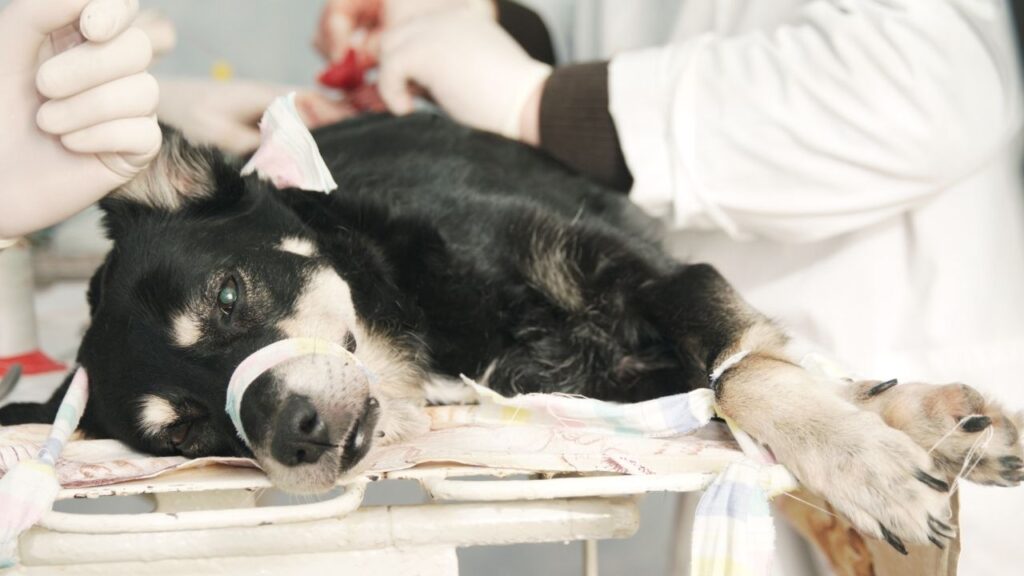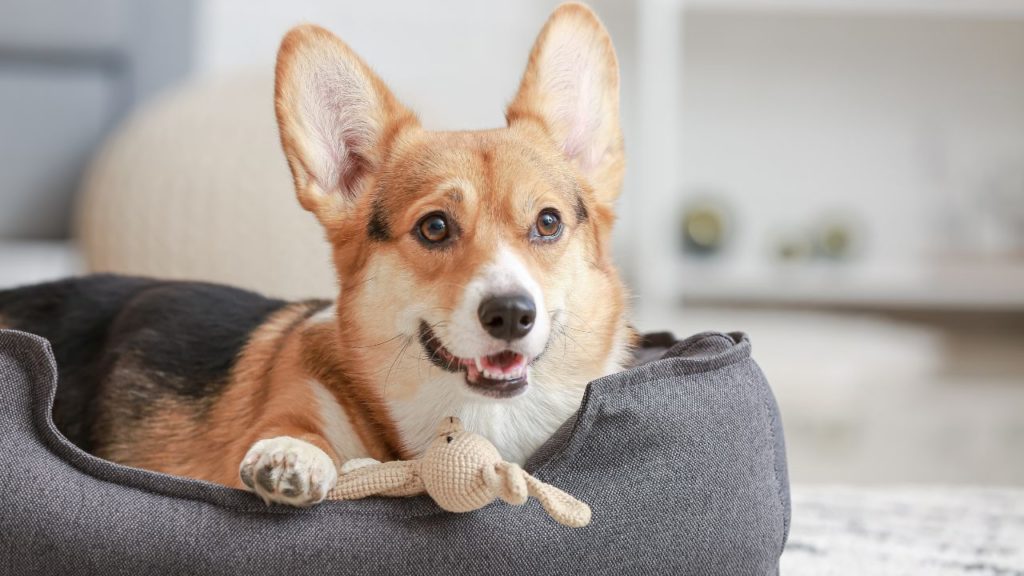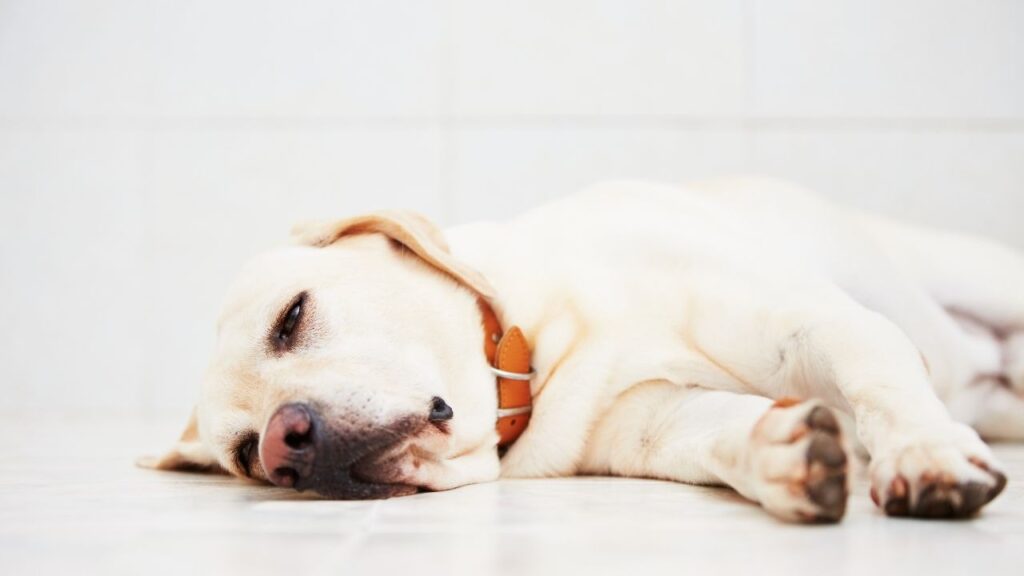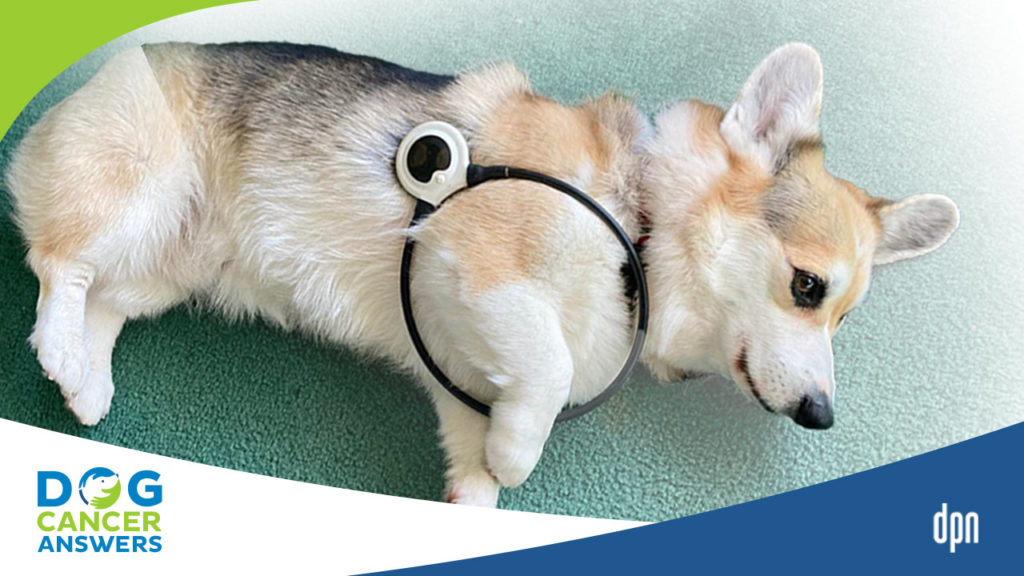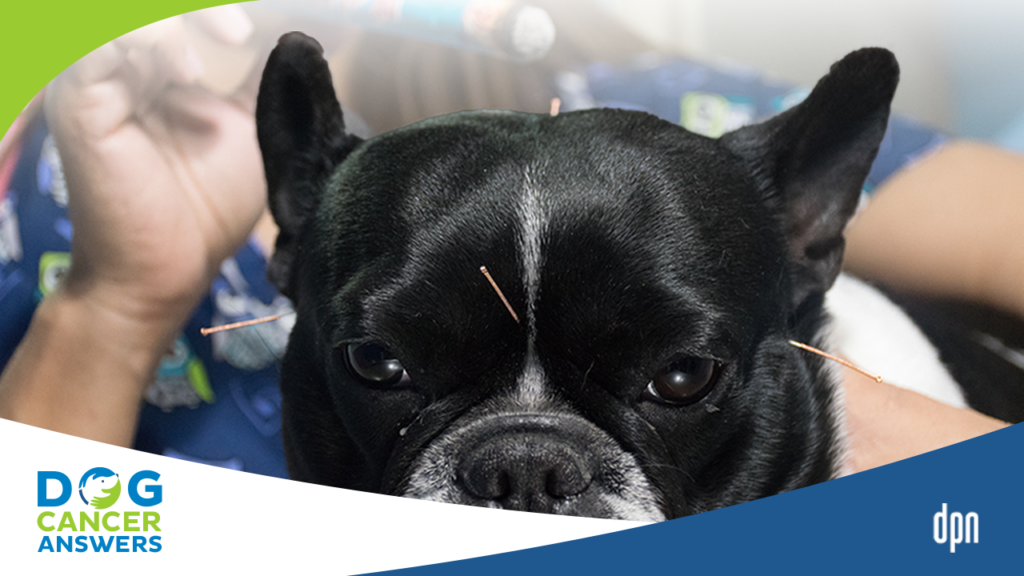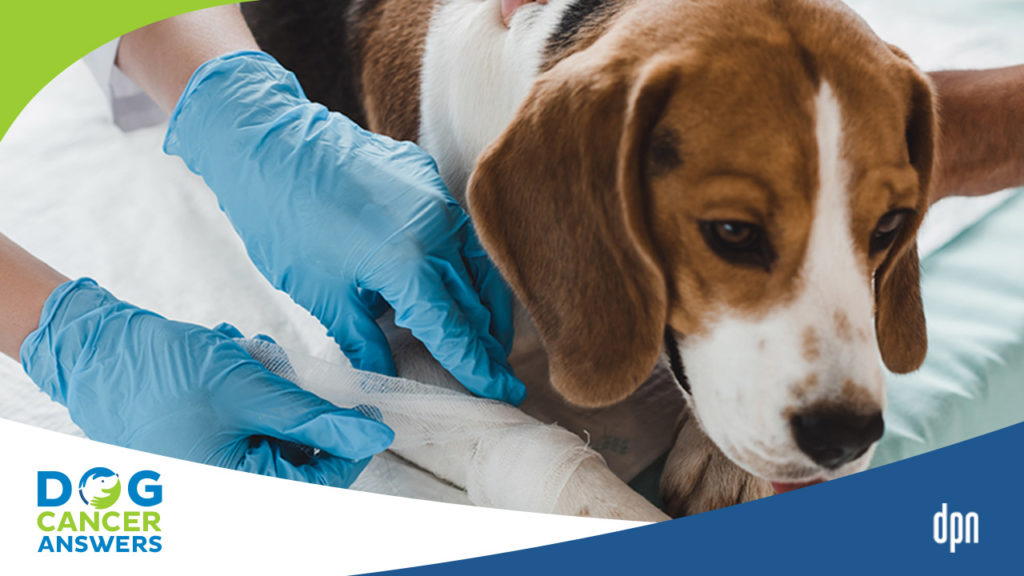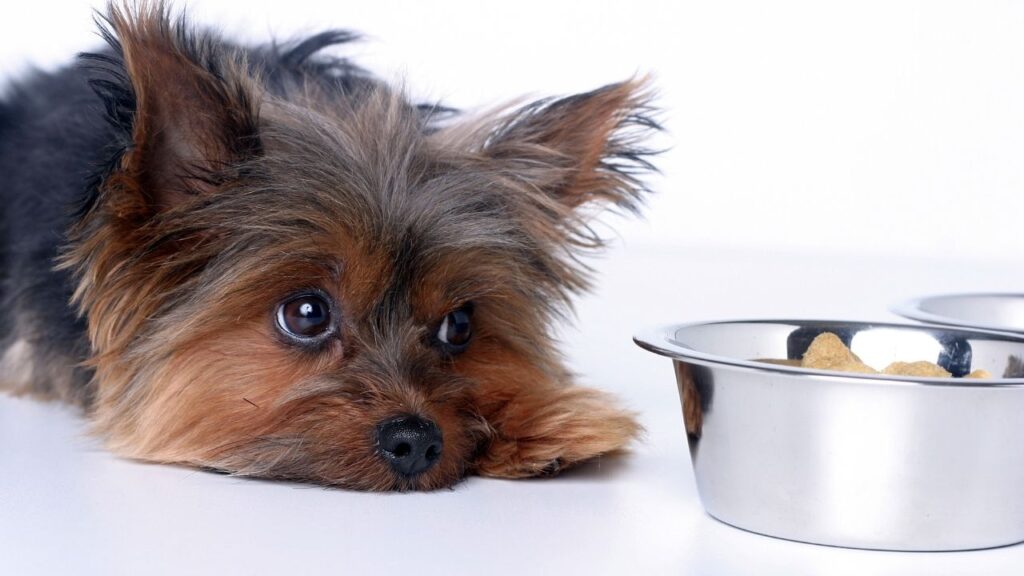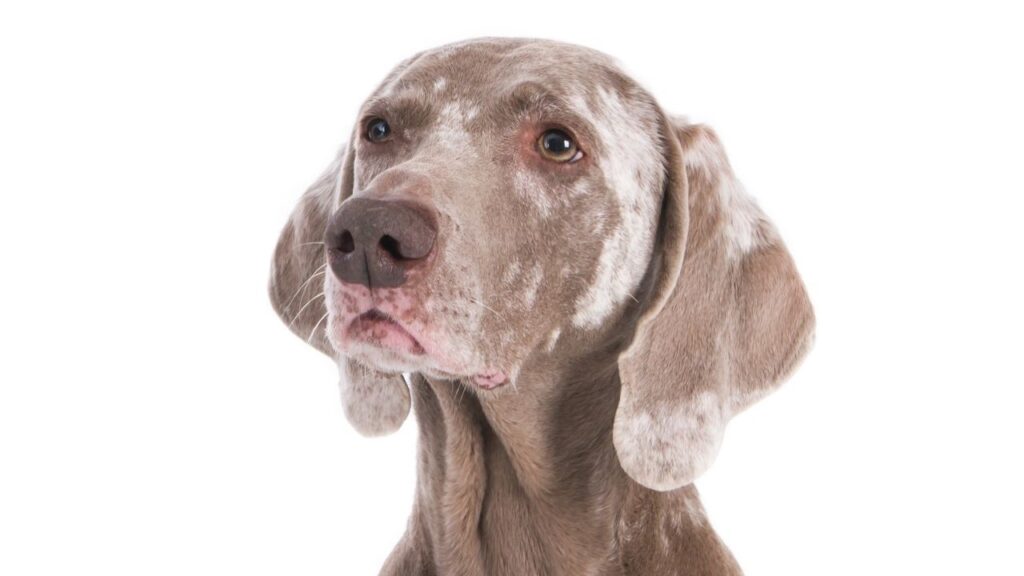Because dogs with cancer can be immunocompromised, wounds may be slow to heal or get infected. Although wounds are a distressing complication, your veterinarian, veterinary oncologist, and veterinary surgeon all have access to many exciting wound healing techniques, medications, and other therapies that will help prevent further complications and get your companion healed!
Key Takeaways
- The fastest way to heal a dog wound is to seek prompt veterinary care so your vet can start any necessary treatment right away or show you how to keep the wound clean at home.
- You know when a dog’s wound is healing if the oozing stops and pink tissue starts to develop around the edges and grow inward.
- You can promote your dog’s wound healing by keeping it clean, preventing further damage, and following instructions from your veterinarian.
- How many days a dog wound takes to heal depends on the size and location of the wound and your dog’s overall health.
- A dog wound can heal on its own, but large wounds may heal faster with sutures.
- Betadine is safe for dogs.
Why Wound Healing in Dogs Is Critical
There are a variety of ways that wounds can occur in canine cancer patients, which makes prioritizing wound healing in dogs with cancer a necessity. The wound may be caused by the cancer itself or could be an incision from surgery or a pressure sore from staying in place too long.
Here are some of the most common wound types that dogs with cancer may experience.
Surgical Wounds
Any incision is technically a wound, even though they are created to help the dog in the long run.
Closed surgical wounds are created through surgery. These wounds are typically sterile and sutured closed to prevent infection. Incisions usually heal quickly because the surgeon sutures the wound closed so that the body only has a small gap to repair.
Open surgical wounds may be purposefully created by a veterinarian because a wound is too large to close completely or if there is already an infection that needs to be allowed to drain.1
Waking up from anesthesia isn’t the end of surgery recovery. Learn how to care for your dog as she heals over the next two weeks in this episode of Dog Cancer Answers.
Lacerations, Punctures, and Traumatic Wounds
These wounds can occur while your dog plays outside, or if they are hit by a car. Injuries may penetrate the skin and the tissues below.
Some dogs may also self-mutilate, or chew open, their own bodies because of an uncomfortable tumor. Some cancers cause the release of inflammatory chemicals that cause itchiness, and others may cause discomfort as they grow larger or become infected. The dog may lick or chew into the tumor as she tries to relieve the itch.1
Ulcerations
Cancers that develop on the skin can often cause ulcers, or sores that resist healing. Melanoma and cutaneous hemangiosarcoma are two examples of cancers that can show up as ulcerated lumps. These sores are often uncomfortable and can ooze serum and/or blood.1
Non-healing Wounds
Non-healing wounds can develop for a couple of reasons in our dogs with cancer. Cancer tissue is abnormal with an abnormal blood supply, and often doesn’t heal properly when damaged. Dogs with cancer are also often immunocompromised, and their bodies may struggle to heal normally from injuries even if they are not directly related to the cancer. Non-healing wounds are prone to infections.1
Pressure Sores
Pressure wounds result from the dog lying on a certain part of the body for long periods or on hard surfaces. The hips, elbows, and pelvic area are most affected. For dogs who are unable to move around normally, it is important to keep them on thick, padded bedding and make sure they roll over and change position every few hours. Pressure sores may be superficial or deep, ulcerative wounds.1
Abrasions
An abrasion is a more superficial wound that does not penetrate to the full thickness of the skin. These minor wounds can be caused by itching/scratching or excessive licking or may be related to other external trauma.1
Burns
Burns are uncommon for dogs, but the use of external heat sources and being exposed for prolonged periods of time can result in severe burns. It can be tempting to use a heat source to provide extra warmth and comfort for your sick dog but do so with caution.1
If you choose to use a heating pad for your dog, be sure to only use products intended for dogs and that your dog is able to get off the heating pad if they get too hot. Also prevent your dog from lying directly in front of heaters to avoid burns.
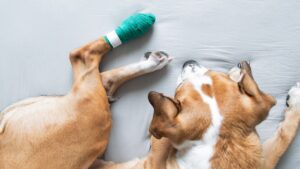
Dogs can get wounds for many reasons, but your vet can help promote healing.
Why Wounds Happen
Surgical wounds are intentional, and surgeons are generally able to choose the site of their incision to make sure that they are using healthy tissue to promote normal healing.
Tumors on the skin may create visible sores as they damage the surrounding tissue. Some of these wounds will heal, while others will resist healing.
Other wounds are usually the result of trauma. Some canine cancer patients may have thin or easily damaged skin and will prove susceptible to injury. Cancer tissues are abnormal, with an abnormal blood supply. When these tissues are damaged, they often do not heal normally. If your dog shows any sign of discomfort or itchiness around a tumor site, she must be prevented from chewing on it and causing more damage.
Pressure sores and burns are more common if the dog is unable to get up on her own and lies in the same position for extended periods of time. Boney protuberances like the elbow, point of the hips, and shoulder are common areas that develop pressure wounds. Additionally, remaining soiled with urine, feces or other liquids can accelerate the damage done to the skin. Lying on a heating pad or close to a heat source for extended periods of time can cause burns.
What to Do to Help Speed Wound Healing
The best thing to do is to prevent wounds in the first place, but you can help your dog heal and prevent infection if an injury does occur. Here are some strategies to consider:
1. Basic first aid.
The wound may be gently cleaned with warm water and a dilute betadine or chlorhexidine solution. Do not use peroxide, as this can slow healing. If there is active bleeding, apply pressure with a clean cloth. Do not apply bandages or a torniquet, and do not attempt to remove any debris. Seek immediate veterinary care or consult with your veterinarian or area emergency service as appropriate.
From broken toenails to ulcerated tumors, it’s no fun when your dog is bleeding. Dr. Nancy Reese gives advice on how to stop bleeding quickly and safely in this episode of Dog Cancer Answers.
2. Prevent access to incisions, wounds, and uncomfortable tumors.
If your dog has started to damage an area or is licking at a wound, prevent her from continuing. This will need to continue after she has been seen by a veterinarian, as it is very important that your dog not lick or chew at a wound or bandage.
Wounds itch as they heal, and they can hurt as they are healing as well. Elizabethan collars (“cone of shame”) are very effective in keeping your dog from licking surgery sites and other wounds, but they are cumbersome. If you feel the collar is not going to work for your pet and your household, be sure to discuss this with your veterinarian.
There are other styles of collar that can be considered, neoprene foot and leg cover that can be taken on and off, and full body covers that look like a baby’s onesie (often called ‘Suiticles R’) that can cover abdominal and chest wounds to prevent self-trauma.
3. Follow instructions from your vet.
If your dog has surgery or is seen for a wound, be sure that you receive detailed written instructions on how to manage the wound from your veterinarian. Be sure you thoroughly understand the instructions, and never be too shy to ask questions!
4. Limit physical activity.
Moving around a lot can delay healing, especially if the wound is near a joint or on your dog’s leg. Stick to leash walks when outside and prevent running and jumping in the house.
5. Use padded bedding.
If your dog is unable to get up on her own, she is at risk for pressure sores. Pressure wounds are very serious and can be very difficult to effectively treat once they develop. Try to encourage your dog to lie on a padded surface and be sure that the area is dry and clean and that her coat is dry and clean. Remember to clean and dry the hair coat and skin if they are soiled.
There are companies that produce covers that help protect areas like the elbows from trauma and they can be very effective. One example is the product DogLeggs.
Encourage your dog to shift positions and get up and walk (if possible). Dogs that are immobile can be lifted with the assistance of a sling or harness. These items are available at most pet supply stores or web sites.
When to Call Your Vet If a Wound Isn’t Healing
Lacerations, abrasions, and burns all require prompt veterinary care. This is particularly important for our cancer dogs as their healing may be delayed and they may be more prone to infection. Wounds can often be deceptive. What may initially appear minor on the surface may quickly develop into something very serious.
Surgical wounds and open healing wounds benefit from being closely monitored as you were instructed when your pet was discharged from the hospital. Signs of concern include:
- Increased redness
- Swelling
- Increased pain
- Discharge from the wound
- Dog acting ill
- Fever (>102.5 F)
- Stop eating and drinking
These are all signs that the healing process may not be going smoothly. Contact your veterinarian or seek emergency care under these circumstances.
How to Tell if a Dog Wound is Infected or Healing
Even after being examined and cleaned by a vet, your dog’s wound or incision will go through many changes as it heals. There will likely be some oozing early on. Clear watery or bloody discharge in small amounts is nothing to be worried about.
Wounds heal from the outside edges in, and you will see a line of new pink tissue growing inward over time. This granulation tissue is fragile, but in time will be replaced with normal skin.
Signs of infection include:
- Discharge that looks like pus or has a greenish color
- Increased, heavy discharge or bleeding
- Redness, swelling, and pain
- Grey or blackish skin
- Bad odor
If you are concerned about how your dog’s wound looks, take a clear picture and email it to your vet’s office. This won’t give them all of the information, but is an easy way for them to see some of what is going on and advise you if you need to change anything in your dog’s care.
You always know if your dog is in pain … right? Not necessarily. Dr. Dressler explains the many signs of pain in dogs in this episode of Dog Cancer Answers.
Things that Help Wound Healing
Antibiotics, anti-inflammatory agents, narcotics, and other pain medications should be administered as instructed by your veterinarian. Any ongoing wound management, wound flushing, bandaging, etc. should also be under your veterinarian’s advice and performed as instructed.
The most important factors for avoiding or managing wounds are:
- Careful observation.
- Instituting plans to prevent injury.
- Prompt attention.
Ancillary therapies that could be considered to help with healing:
- Acupuncture2
- Laser therapy2
- PEMF therapy, such as the Assisi Loop2
- Novel wound therapies used in veterinary medicine – from maggots to using sugar and honey to aid healing, your veterinarian can recommend a variety of strategies to help heal stubborn wounds.3
- Consider instituting dietary changes as recommended to promote overall health.
If Wound Healing Is an Issue, Is This a Sign of the End?
Wounds happen to pets all the time and can be readily treated in most cases. Our dogs with cancer do present certain wound prevention and management challenges. Severe, non-healing wounds that are infected and are leading to sepsis, further pain, and additional complications may be an indication that euthanasia should be considered. However, in many cases, there are a wide variety of therapeutic tools, treatment plans, and safe integrative therapies available that will help your dog heal and recover.
- Winkler KP. Wound Management. Merck Veterinary Manual. Revision January 2021, Updated November 2022, Accessed January 2023. https://www.merckvetmanual.com/special-pet-topics/emergencies/wound-management#
- Bancroft A, Zeto M. Using Lasser Therapy, Acupuncture and the Assisi Loop for Alternative Pain Management in Dogs and Cats. Published June 2018, Accessed January 2023. https://www.medvetforpets.com/using-laser-therapy-acupuncture-assisi-loop-alternative-pain-control-dogs-cats/
- Wardaw JL, O’Connel K. Unique Therapies for Difficult Wounds. Today’s Veterinary Practice Published August 2011. Accessed January 2023 https://todaysveterinarypractice.com/integrative-alternative-medicine/unique-therapies-for-difficult-wounds/
Topics
Did You Find This Helpful? Share It with Your Pack!
Use the buttons to share what you learned on social media, download a PDF, print this out, or email it to your veterinarian.
